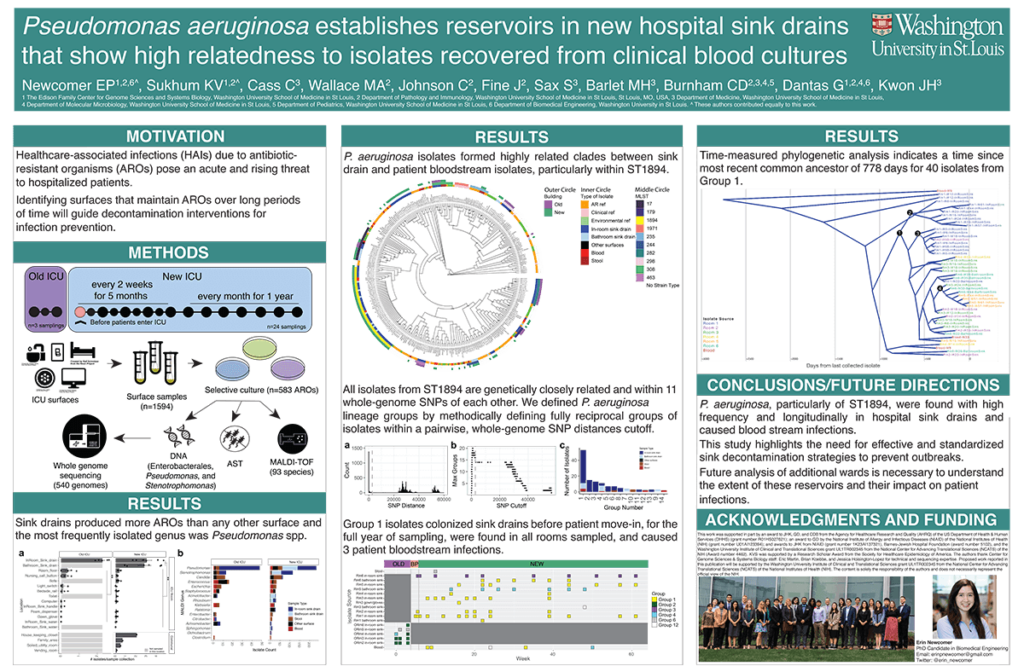Introduction: Healthcare-associated infections acutely threaten intensive care units (ICUs) with studies indicating that Pseudomonas aeruginosa (PSAR) reservoirs in hospital built-environments can lead to infections and outbreaks. Despite this, it is unclear how pervasively antibiotic resistant organisms (AROs) like PSAR colonize ICU surfaces. We sampled surfaces in a newly-built stem cell transplant and oncology ICU before and for one year after establishment and found close associations between surface and patient blood isolates. This led us to expand our investigation to PSAR patient blood isolates across the Barnes-Jewish Hospital system.
Methods: Surface and patient fecal samples were selectively cultured to enrich for AROs. PSAR blood culture isolates were recovered in the clinical laboratory for diagnostic purposes. Isolate lineages were established with shotgun whole-genome sequencing and pairwise whole-genome SNP analysis, which will also be conducted on the additional patient blood isolates. Hybrid genomes of select PSAR isolates were created using long-read sequencing data. Time-measured phylogenetic analysis was conducted using core genome alignment.
Results: PSAR was the most frequently identified species, comprising 156/696 of all isolates initially cultured and formed several clades with highly related sink drain isolates. Notably, 52/156 PSAR isolates were of ST1894, and this ST was recovered from the same sink drain before patient occupancy, for the full year of collection, and from 3 blood cultures. SNP analysis revealed no more than 11 SNPs between isolates within this ST. Time-measured phylogenetic analysis indicated a time since most recent common ancestor of 778 days for 40/52 isolates. We expect to find this lineage in patient blood isolates from across the hospital system, as well as other recurrent lineages.
Impact: ARO colonization of hospital sink drains has the potential to function as a reservoir for ARO transmission to patients. Specific strains of PSAR were found with high frequency and longitudinally in the environment and caused blood stream infections. This study highlights the need for effective and standardized sink decontamination strategies to prevent outbreaks.
Organization – Washington University in St. Louis
Newcomer EP, Sukhum KV, Cass C, Wallace MA, Johnson C, Fine J, Sax S, Barlet MH, Burnham CD, Dantas G, Kwon JH
